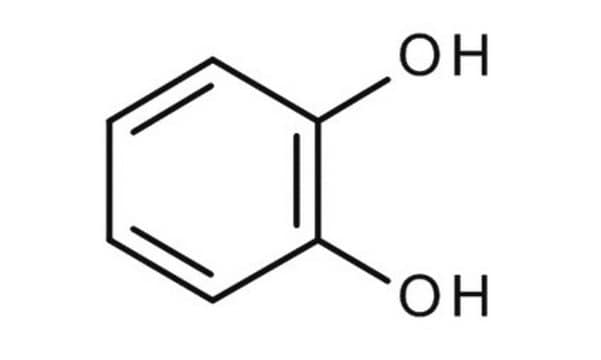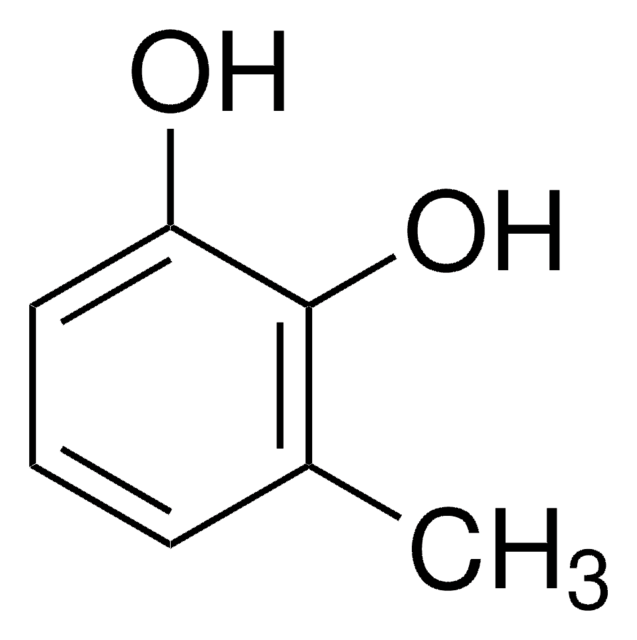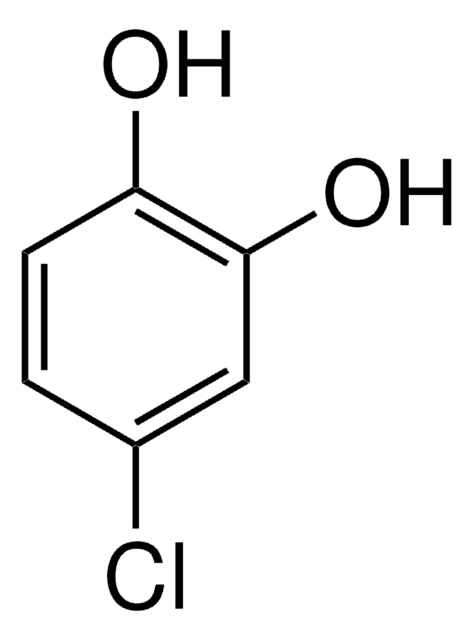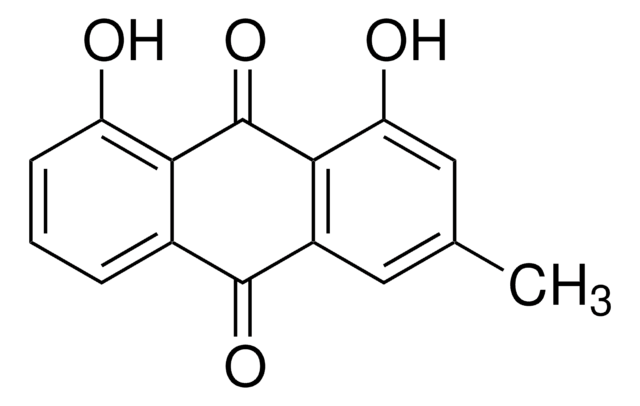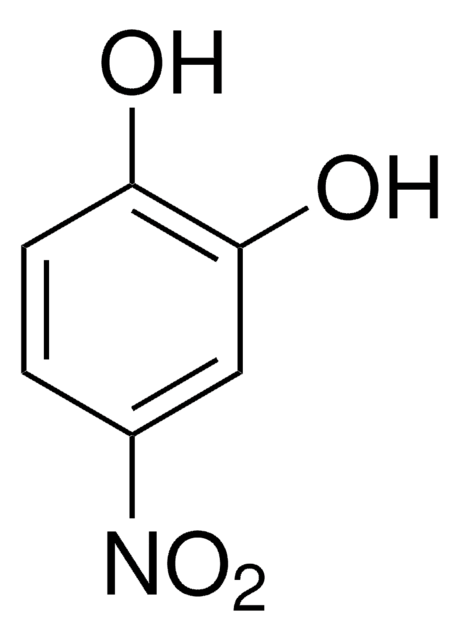C9510
Pyrocatechol
≥99%
Synonym(s):
1,2-Benzenediol, 1,2-Dihydroxybenzene, 2-Hydroxyphenol, Catechol
Select a Size
Select a Size
About This Item
Recommended Products
biological source
synthetic (organic)
Quality Level
vapor density
3.8 (vs air)
vapor pressure
1 mmHg ( 75 °C)
10 mmHg ( 118.3 °C)
assay
≥99%
form
powder
color
white to faint beige
bp
245 °C (lit.)
mp
100-103 °C (lit.)
solubility
water: 50 mg/mL, clear, colorless to faintly yellow
Looking for similar products? Visit Product Comparison Guide
Caution
signalword
Danger
Hazard Classifications
Acute Tox. 3 Dermal - Acute Tox. 3 Oral - Carc. 1B - Eye Dam. 1 - Muta. 2 - Skin Irrit. 2 - Skin Sens. 1
Storage Class
6.1C - Combustible acute toxic Cat.3 / toxic compounds or compounds which causing chronic effects
wgk_germany
WGK 3
flash_point_f
260.6 °F - closed cup
flash_point_c
127 °C - closed cup
ppe
dust mask type N95 (US), Eyeshields, Faceshields, Gloves
Choose from one of the most recent versions:
Already Own This Product?
Find documentation for the products that you have recently purchased in the Document Library.
Customers Also Viewed
Our team of scientists has experience in all areas of research including Life Science, Material Science, Chemical Synthesis, Chromatography, Analytical and many others.
Contact Technical Service
